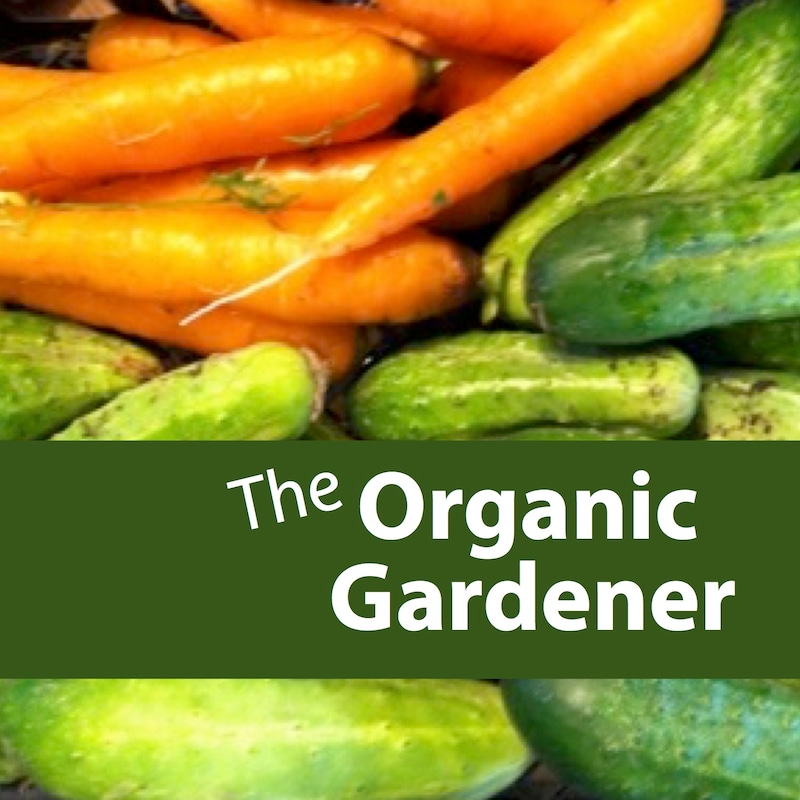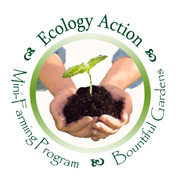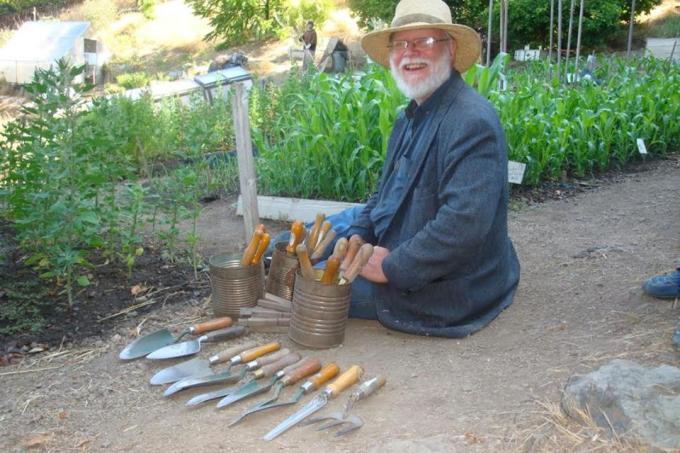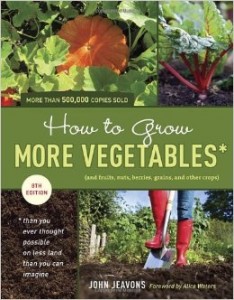
Shownotes
This episode was originally published on Apr 25, 2016. In tomorrow’s episode I will be talking about amaranth and I thought this would make a great replay. It’s definitely in my top ten most memorable interviews! What a rockstar millennial!
Jes Pearce explains the Bio-intensive Method.
Jes Pearce is another one of those amazing rockstar millennials who do exciting things while being advocates for the planet and great stewards of our land here today to inspire you with her story!
Coming to us from the Jeavon’s Center for Research and Education sharing passion and knowledge that’s gonna get you excited to dig in that dirt right now!
Grow Bio-intensive Mission
The Growbiointesnive.org says their mission is to: “is to train people worldwide to better feed themselves while conserving resources”
Get ready to here about the bio-intensive 8 step method, crops you can grow for a complete diet in your backyard garden with a little power adventuring thrown in!
Tell us a little about yourself.
I am currently the mini-farm manager at the Jeavon’s Center for Research and Education. I’m originally form Baltimore, MD. I grew up with a classic suburban upbringing. No memorable experiences gardening in my childhood… grew up … went to college, cause that’s what I was supposed to do, put in my 4 years. … But I no idea what I wanted to do with my life. I knew I wanted to make a difference, but I had no idea how
Well, if I don’t know what I want
I should just go serve other people
Maybe I will figure out what I
Americorps program with adults with disabilities, I moved out to Tucson AZ, and started this job and thought I’m gonna help people!!!
did that job for a year,
this is really cool. I help people
what about the environment?
it’s really cool to help people
if they have no where to live
I got another Americorps job for a trail crew in Oregon.
so what is helping them gonna do
Im gonna get a job in Oregon for a trail crew
I pretty much lived in the woods for a whole year, mounting these hiking trails, I felt like I helped the environment,
This is cool, but how do I bring these together and help the environment?
I had the fortunate opportunity to move to Hawaii
a friend was like let’s go to Hawaii and we’ll work on farms there and we’ll figure something out!
I love those kind of friends!
so we moved to Hawaii and we were working on a farm out there…
it really only took me about a week of working on a farm to be like This is IT!!!
I found it I was in love!
I WAS IN LOVE!
I knew this is what I want to do for the rest of my life!
it really became clear to me, that this was the way to mix serving people and growing them nutrition food and serving the earth by practicing ecological farming practices!
- You could tend the soil!
and
- Care for the earth!
and
- Give back while receiving healthy nutritious food for myself and for the community there!
AWESOME! That is a beautiful story, but your painting it over and make it sound easier then it was,
It was tough work, but it was a cool experience for me, because it showed me how rewarding hard work is
never had an experience … that pushed me and challenged me … going through that process
Im still alive! And I survived. It really made me feel, how much I am capable of and how capable all humans are we are never pushed to our limits!
I love the whole service piece, and IDK what I want to do so I’m gonna go help these people. IT’s interesting when I came to plant trees, the University I went to has this Wilderness and Civilization program, I wasn’t really active, I rode my bike, and you know I was in college, so pertly young and healthy, and he was like Jackie it’s all about attitude…
That’s true!
We have to we have potential to break-free of the boxes we put ourselves in and we can accomplish anything.
Tons of golden seeds, a lot of times in college, it’s always good to step outside your comfort zone and
What a great story to meet your love!
We’re about to celebrate 23 years. I was like this little girl from NY, it seemed like a big deal to move to Montana, so for you to go from Maryland and then I’m gonna take this Americorps job in Arizona! And Americorps if listeners don’t know its like the Peace Corps, you can do here in the USA, and there’s a part of that called the Food Corps helping provide healthy nutritious food for people in America.
Now you’re in California. You’r parents are in Maryland.
They’re still in Maryland. Baltimore County, I grew up right near the city line.
Tell me about your first gardening experience?
really, my first experience was in the Farm in Hawaii, I’m sure I went to a garden or was in a garden or went to a farm before then
wasn’t really till I went to Hawaii, that I really understood what it was all about! It was really cool to have my first farming experience
stronger sense of the issue of food insecurity, maybe because they are islands, they seem to be a there seem to be a greater awareness of the food insecurity because what if the boats stop coming
only had 10 days worth of food on the island at any given time
The importance of stronger systems to be able to sustain themselves
so if the day came, the boats stopped coming, they would have enough food to eat!
The early exposure, to that mentality
really true of any city anywhere in the world, most of the food is brought in, and what if that system stopped?
our conventional food system is pretty fragile
based on these fossil fuel imports, chemicals, and things that are not healthy for our planet and our bodies, and it really could fall apart what do we want to do to make it stronger and more sustainable?
I was asking myself these questions in Hawaii, there’s not a lot of farmland. So how do we do this?
I met this amazing couple.
farming on Kwai
had this tiny growing area
packed full of plants they were attempting to
grow for their whole diet
growing crops for soil fertility
for market to make an income
breeding
crops adapted to growing in their tropical environment!
They were just amazing! I was like how are you doing this? How can I do this?
They were like have you ever heard of John Jeavons?
I open the book and it’s all there! This simple, accessible method to growing food in a small space. This is how we do it! This is how anybody anywhere can grow food to work together to create a more resilient food system! More sustainable communities!
Man, it was such a relief for me, I was like, this can be done! I felt so empowered! Suddenly I realized this is possible! I felt so empowered! I could go out in
So were you working for the WWOOFer Program? So how did you meet the farmers that taught you this?
so we met them through the farmers we were working for, I never worked on their farm full time, but I would go there on my day off!
It was amazing! It’s only through an odd chain of events, that I’m still not their on their farm in Hawaii! But I’m grateful into where I am today.
Let’s tell listeners how I reached out to you and where you are!
So, I am currently working at the Jeavon’s Center
reached out my boss, John Jeavons the founder of the Grow Bio-intensive method of ag and sustainable farming. And he wrote the book how to grow more vegetables
we practice this method
and
So I am currently the mini-farm manager at the Jeavon’s Center for Research and Education where we teach and practice the Grow Biointensive method of sustainable mini-farming.
This method attempts to grow a complete diet on the smallest area possible while maintaining soil fertility and conserving resources. So it was originally started by John Jevins in 1972 by John in Palo Alto CA. These techniques have been practiced for over 40 years, and beautiful simple method of agriculture. That is truly accessible to anyone anyone anywhere in the world!
Now where I found you, is in the catalog, from the Bountiful Gardens catalog.
Originally the Jevin’s Center for Research and Education is under the Ecology Action non-profit umbrella and Bountiful Gardens is under the Ecology Action non-profit umbrella and so while we function on a day-to-day basis as separate organizations, we grow some seed for them and receive some seed as well and we will table with them at events, and they are also located her in Willets California, we partner with them on a lot of things.
 The seed company was started as part of Ecology Action, because when John was starting this back in the ’70s he had trouble accessing high quality open pollinated seeds, so he was like let’s have them here!
The seed company was started as part of Ecology Action, because when John was starting this back in the ’70s he had trouble accessing high quality open pollinated seeds, so he was like let’s have them here!
idea that was born out of necessity And then this amazing company was born
that offers very great high quality seed and really exciting special varieties
You’re gonna talk about the bio-intensive method, one of the things was that impressed me was that something like 60% of what you grew was for the soil and only a part for calories.
8 Steps to Bio-intensive
The method has these 8 guides enable you to grow a complete diet.
conserve resources
it’s actually the 8th principle, the last principle
the idea of a whole interrelated farming system, so any time you walk into any growing space and taking that mindset and this perspective, that this is parts of seeds an plant and soil… its a whole living dynamic system
when we approach, farming and even our backyard garden we need to think about how the parts are interconnected. If you try to isolate a single principle, it will not function properly.
So do you want to go through the 8 steps then? We’ll start at the top!
The first principal is
Deep soil prep = double digging
preparing the soil so we can grow a lot of plants in the small space
root structure can grow and receive nutrients.
close plant spacing
This goes along with principal of close plant spacing
how we achieve the ability to achieve
the soil is deep, we can plant the plants very close together. This also, when they are that close together,they create this living micro climate, their leaves just touch each other, and forms protection for the soil below and fosters really healthy life that grows under there
one of the principles is the use of compost
we can’t plant close together in this small area if we don’t have fertility
Our garden has gotten bigger and bigger a little bit each year, when we first started mike had thesis little beds. Mike built these deep beds that are like hip high, having that dirt they could go down into, made a huge difference in his success.
I think he figured he could go down to 27• I know where eI live and probably other people live, where there are a lot of deer, having chicken wire covers or plastic covers. I was just thinking those deep beds were really nice.
its amazing that deep fertility, how much water and nutrients can be held in that
It’s cool to hear about,
exposure to deer because you din’t have fence up, with that smaller space you were able to make productive covers in that little area. IT’s really cool that a little talc can go a long way in a small space.
We didn’t have a lot of weeds because it was a smalls pace.
probably a lot more productivity in that smaller area
potentially higher yields
a little
that’s a great point about the water too. when you’re working in a a smaller space you need less water…
You have less ground to cover, you can be more intentional about where you put your water, it’s a much more resource efficient.
Yep there’s nothing like hauling water to make you intentional where you water your plants.
companion planting
crops that benefit each other, another way to grow efficiently. Not only do we look at the beneficial companions that you read about traditionally companion planting books. But we are also thinking about root structures of crops, how will they grow next to each other? How could we stack crops together to benefit each other?
This past year, I experimented with lettuces with my quinoa (keen-wa). By putting lettuce in-between the quinoa, it created this microclimate and protection for the soil. By the time it got big enough to cover the ground with their own leaves
the lettuce was mature and I could harvest it out from under the quinoa.
So that’s a grain that’s a mixture between cous cous and rice is how I describe it. I just had some delicious quinoa at a potluck a few weeks ago.
while in time and space they were good companies
longer growing time then lettuce
there are numerous varieties
hardy adaptable crop, can come in different heights, and times to mature.
4 months about how long it takes for most varieties. to mature in most climates
quinoa fits right into a big part of our growing system, because we grow a lot of grain
fits into one of our principles
Where we’re trying to grow these crops that will help maintain soil fertility. So what that means for us is we want to grow crops with a lot of biomass so we have more materials to use in compost. So grain is a great example of the crops we can grow that have the potential to grow tall long stalks to give us for compost building but they also provide us with food and grain we eat ourselves. So we grow 60% of our growing area in these crops that can provide both food for ourselves and food for the soil!
We bought a chipper a few years ago because corn stalks and sunflower stalks are harder to compost. Is quinoa like that? I love that you can eat, too I mean I guess you can eat lentils, but like we bought clover and buckwheat, and you could probably eat the buckwheat…
You can eat buckwheat,...






